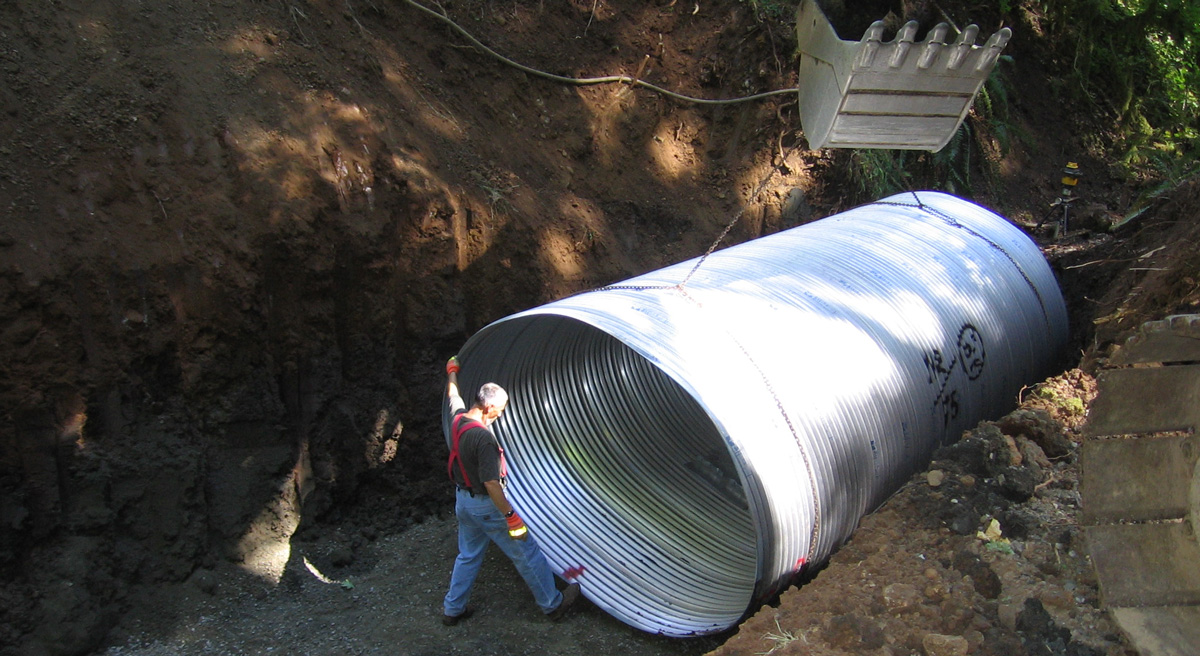Forest Roads
Why are quality forest roads cruicial for clean water?
Forest roads are essential for getting timber to the mill and fighting wildfires. Yet some forest roads—especially older roads—can be a source of sediment flowing into streams, which can degrade drinking water quality and harm fish and wildlife. The goal of Oregon forest practice laws, and contemporary forest engineering, is to build and maintain roads in ways that divert any muddy runoff onto the forest floor and away from streams, rivers or lakes.

State regulations for forest roads
Written plans: A properly located, designed and constructed forest road greatly reduces the chance that runoff and sediment will enter a stream. A written plan must be submitted to the Oregon Department of Forestry (ODF) before construction.
Location is key: Landowners must locate forest roads as far from streams as possible (a minimum of 50 feet), and use the existing contours of the forestland. They must also avoid steep, unstable slopes to minimize potential for landslides and minimize excavation.
Engineered to lessen impact: Excavation, surface preparation, drainage, gravel installation and grading should be planned and overseen by a forest engineer to minimize the chance that muddy runoff will enter streams or other waterways.
Maintained for the long run: Forest roads, whether new or old, must be inspected and maintained to minimize the effects on nearby streams. New gravel, drainage systems, culverts or bridges may need to be added over time. If a road is no longer needed, it should be vacated, re-contoured and, ideally, replanted with native vegetation.
Account for fish and water: While engineers try to minimize the number of times a forest road crosses a stream, some crossings are inevitable. At crossings, rules require drainage to divert road runoff onto the forest floor, not into the stream. Rules also require that new stream crossings allow fish to pass upstream and downstream of the road crossing, and culverts and bridges must be able to handle a 100-year flood event.
Watch the weather: Current forest practice rules put additional requirements on forest roads that are used during very wet weather. Roads that are not up to the standard must not be used during heavy rain because sediment runoff into streams is more likely to occur if log trucks drive on them during wet weather.
This is just a partial list of road construction requirements. Learn more in the Private Forest Accord Report and Oregon’s Forest Protection Laws: An Illustrated Manual.

New, expanded forest road standards
The Oregon Legislature passed a law in 2022 that set new standards for upgrading roads and culverts on private forestland. The new forest road standards were the result of the Private Forest Accord agreement between representatives from Oregon’s timber industry and major conservation groups to modify the Oregon Forest Practices Act (OFPA) in a way that expands protections for fish and amphibians.
New standards will be required for culvert sizes and installation procedures for fish-bearing streams. Some road-building rules will be modified to focus on minimizing sediment in streams. Large forestland owners (defined as owning more than 5,000 acres) will be required to complete a road inventory assessment within five years and update all roads to new standards in 20 years. Small forestland owners (defined as owning less than 5,000 acres) will need to complete a less rigorous road condition assessment when filing notice with the state of plans to harvest timber.
The newly-passed legislation also established a new state program, the Family Forestland Fish Passage Program. The program offers financial and technical assistance to the owners of smaller forestland properties to replace all fish-bearing culverts and make other necessary road repairs on their property to meet the new forest road standards.
 Oregon Forest Laws
Oregon Forest Laws